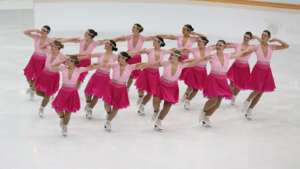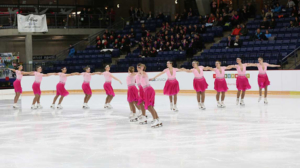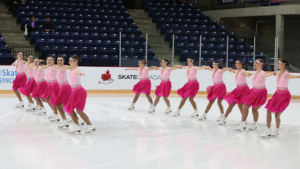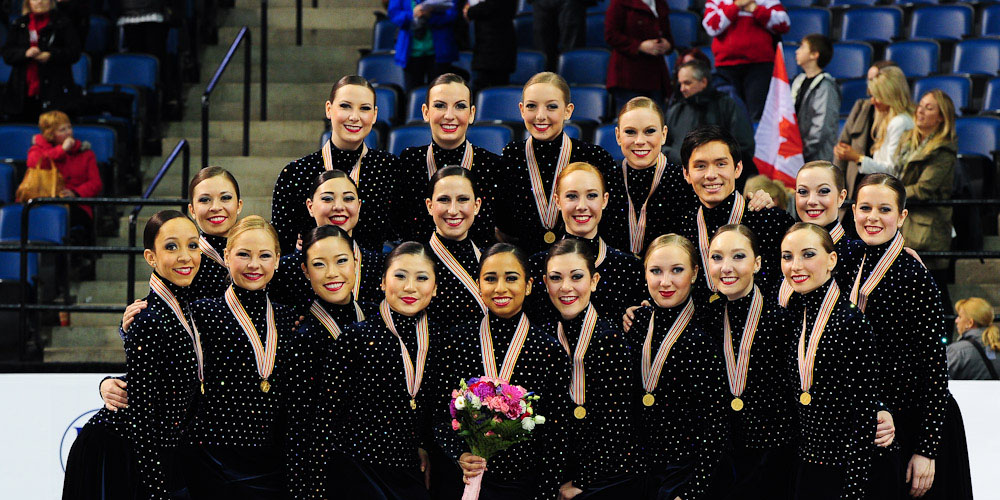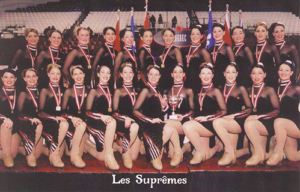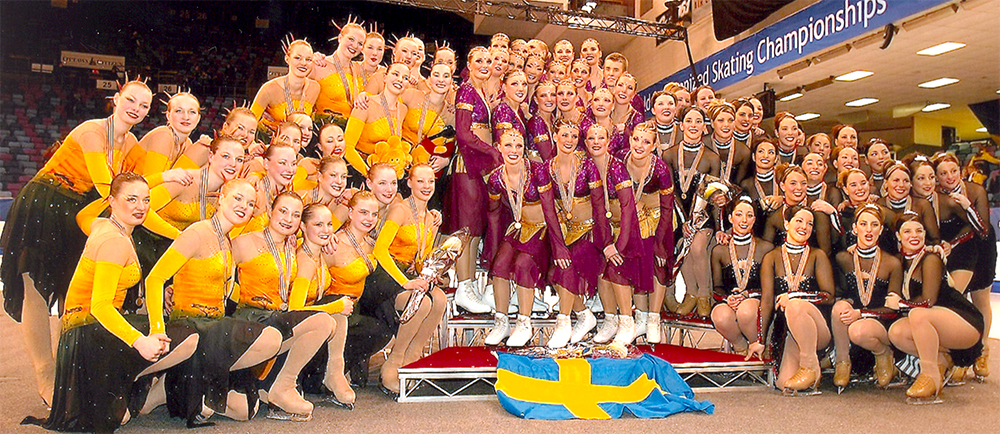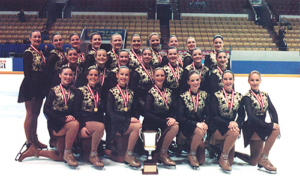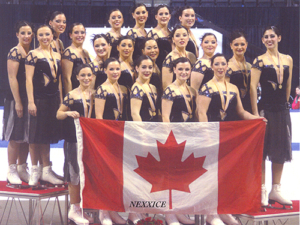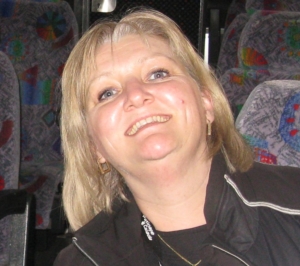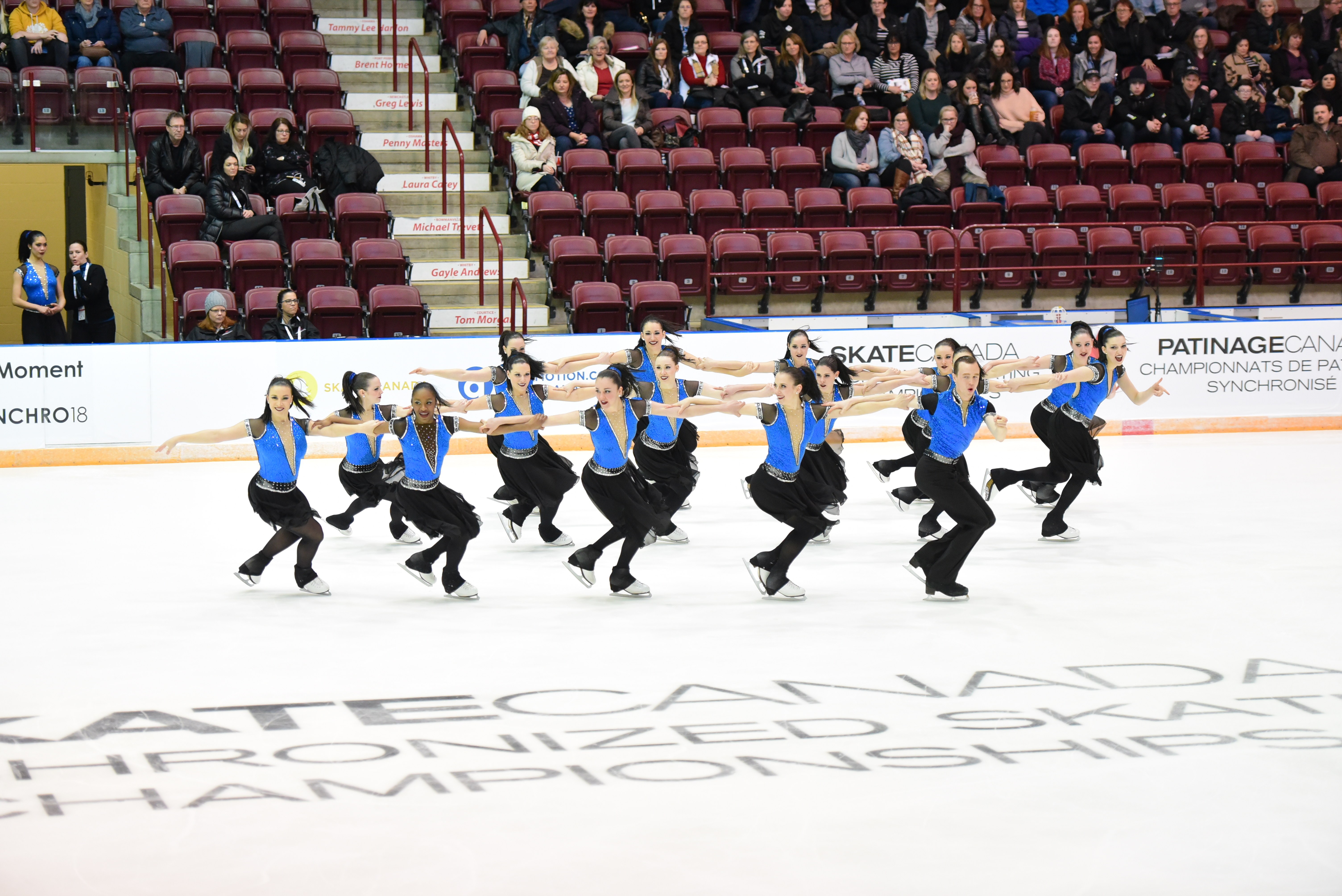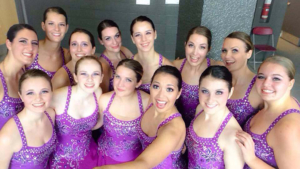
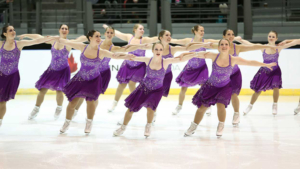
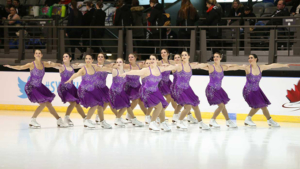
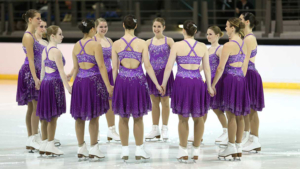
The year was 1999 when Megan Maxwell and her friend Ashley Renard, both students at the University of Manitoba, decided to put together a Synchro team as a way to get people together and enjoy skating.
It was a bumpy start. How do you attract members? Who will coach? What are the goals … the costs ..? What about a name?
With both women understanding that forming a team would take hard work and daring, Ashley came up with the name, Ice Intrepid, characterized by the “fearless fortitude” they both knew it would take to make the team successful.
As for who would take on coaching duties, all signs pointed to Megan who had been coaching recreational Synchro for two years in her hometown of Oakbank, Manitoba, east of Winnipeg. At first the thought of coaching the new university team was overwhelming … until her former coach Krista Hanson stepped in to help, agreeing to share choreographic responsibilities, something that helped build Megan’s confidence and opened the door for her to set some ambitious goals.
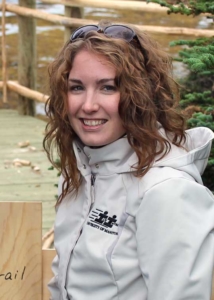
Megan Maxwell
In the 16 years since Ice Intrepid was born, Megan has been its cornerstone, coaching the team, planning its progress and leading the way in its continued development. At the same time she also earned a Bachelor of Physical Education degree while continuing to dedicate herself to synchronized skating. She is an NCCP Level 3 certified coach in Synchro, a Synchro Technical Specialist and sits on the Synchro Committee for Skate Canada Manitoba. In her “spare time”, she works full-time for Parks Canada.
After three years on the team and graduating in Exercise and Sports Science, Ashley moved to the States where she too has become a leader and Master Coach. She is the originator of the first youth synchronized skating team in Philadelphia and now, as Director of Synchro at the Wissahickon SC, she is overseeing 100 skaters on 8 teams.
These two dynamic women shared a vision.
Thanks to them some 125 skaters have passed through the Ice Intrepid organization, most while pursuing a university degree, each one sharing their founders’ enthusiasm and learning from Megan’s ever-evolving coaching education and philosophy.
“I believe integrity is important.” says Megan. “I aim to be honest, fair and consistent in an effort to provide a place where my skaters can trust and know what is expected of them. From a team perspective, integrity is key to our unity, solidarity and strength.”
While Megan concentrates on developing great skating, her team’s training also includes the opportunities to learn many of life’s important lessons … and she is the consummate role model.
“I believe in being professional. As a coach, I arrive prepared at each practice and event with a plan. I aim to be competent in identifying errors and providing constructive corrections. As a team, I expect members to become skilled and polished skaters. I also aim to create an inclusive team environment where all team members are respected and valued.”
As the organization has grown, the team has taken on new ideas and expanded their goals. What began as a recreational activity for most participants has now evolved into a serious commitment where members are motivated to compete at the highest levels.
To get there, Megan knew some tough decisions had to be made despite the hurdles of geographic distance and costs associated with access to top teams and coaches from Ontario and Quebec.
“Over the last 4 seasons, we’ve had Nexxice skaters, in particular, Lee Chandler and Jennifer Critchton (Beauchamp) to help us with program lay-out. Their world-level quality skating has taught and inspired us to improve our knee bends, flow and artistry. Adding to those skills has been Wendy Coates who was living in Winnipeg in 2007-2008 and helped us realize the importance of designing programs that build momentum and speed.”
On the artistic side, Kayleigh Nichol of London, Ontario joined the team in the fall of 2010, skating for one year and then volunteer coaching for 3 years.
“With her Synchro experience and her background in theatre, Kayleigh has been a great addition,” offers Megan. “Kayleigh really developed the interpretative and expressive side of our team and helped us believe that more was possible.”
Megan has left no stone unturned in the search for the tools to improve by encouraging each member to take ownership of their individual progress. She requests monitoring feedback from Technical Specialists in Alberta via video footage, asks team members to evaluate weekly videos of practice sessions posted on-line, and has the team involved in regular stretching and yoga programs.
Remarkably, as the team began to believe in itself and embrace the idea that performing difficult routines with quality skating skills was truly possible, their move up the Synchro ladder to one of the top teams in the country has been sure and steady.
Over the years, their love for Synchro has continued to climb too. When World Synchro events are held in North America, many team members take advantage of the opportunity to watch Synchro at its best … and learn. This year in Hamilton at Worlds, seventeen past and present Ice Intrepid members were on-site to celebrate the sport.
“It was fantastic to look around and see how many current and former skaters from the team were watching,” says Megan. “After so many years, we were all thrilled to be together seeing new ideas unfold … and with Canada winning the gold medal, I felt like a proud parent!”
Not only have their individual Ice Intrepid experiences been positive, members all claim that Synchro has added to their lives. Of the 17 skaters photographed in Hamilton, (see photo: from left to right, members lined up in order of their time on Ice Intrepid), at least 12 are still actively involved in Synchro, either competing, coaching or directing programs.
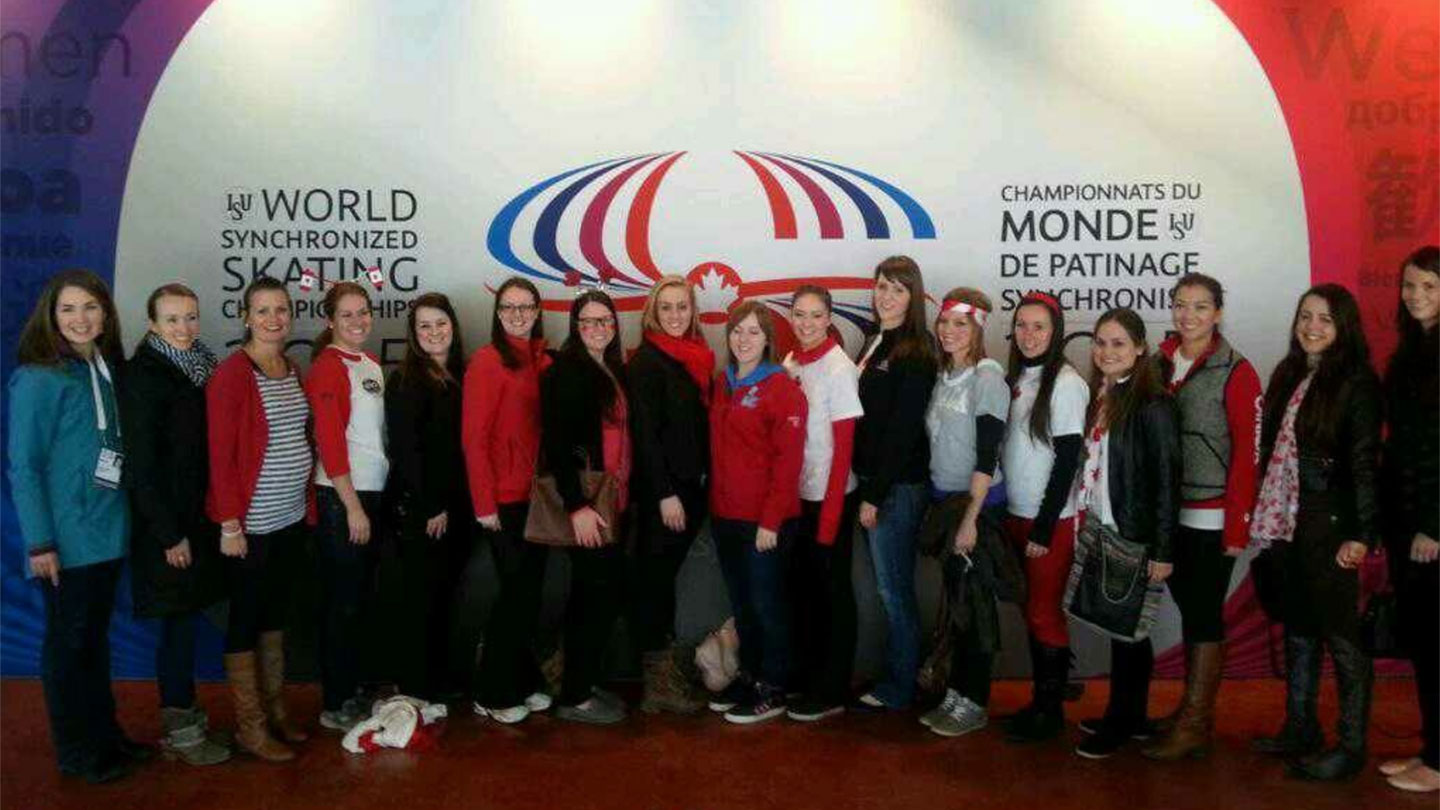
What is it about the sport that ties people to it for life?
The Hamilton delegation was quick to respond. Making best friends, travelling, building confidence, learning organizational skills, teamwork, cooperation, goal setting and leadership were some common themes.
Heather Baron who competed with Ice Intrepid for 4 years while completing a degree in Agriculture adds, “I loved all the daily laughs … and ‘secret buddies’, the selfless acts from one member to another to make their day a little brighter.”
Meghan Sprung, a 5-year member while earning a degree in Human Ecology, continues “It was my first trip to Nationals when my eyes were opened to the broader Synchro community and to all the possibilities that come with training and hard work.”
During her 6 years on Ice Intrepid, Jessica Watson worked toward her degree majoring in Computer Science with a minor in Math. For her it’s the cherished memories. “Lots of traveling, lots of random inside jokes, all the traditions, breathing exercises, hand stamps, hugs and ‘Can I get a woot, woot?’ …”
Human Nutritional Sciences grad, current Synchro participant and skating coach, Joelle Enns, sums it up perfectly. “Along with the skills, I also gained life-long friends and memories that will stay with me forever. All of that fueled my passion for the sport of Synchro and brought me to where I am today. Without Intrepid, I wouldn’t have made it this far in my skating career.”
Ice Intrepid, the University of Manitoba legacy lives on …
